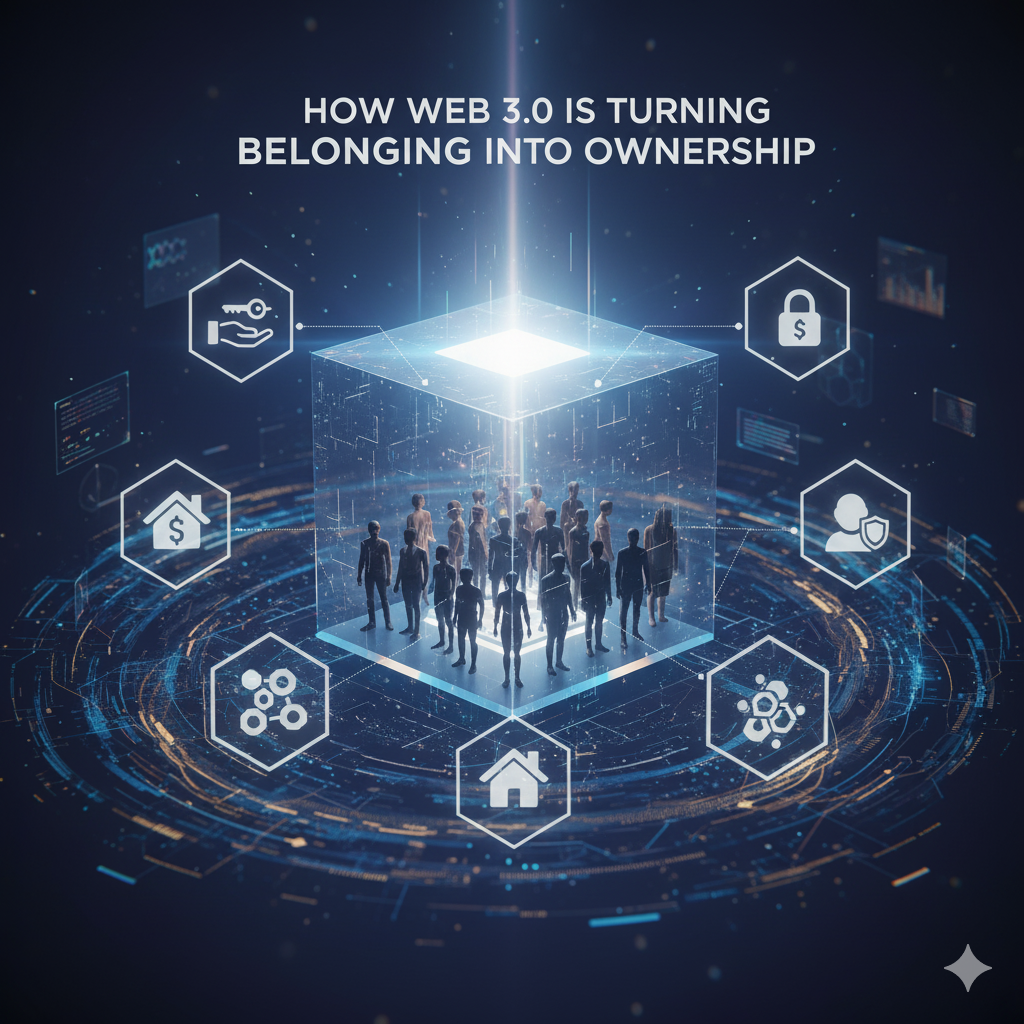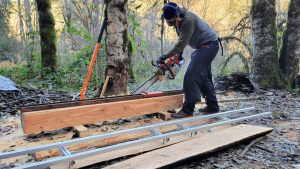Technology
How Web 3.0 is Turning Belonging into Ownership

Introduction
Digital communities have existed for decades. Forums, social media groups, gaming guilds, and Discord servers have connected millions of people around shared interests. Yet, for all their reach, these communities have always been fundamentally one-sided. Platforms control the rules, decide who benefits, and often dictate the very fate of the members themselves.
Web 3.0, as a web3 development company puts it, flips this dynamic. Through tokenization, communities are no longer just spaces for engagement they become ownership-driven ecosystems. Members hold stakes, participate in governance, and even share in the economic value their activities help generate. This shift is not merely technological; it is social, behavioral, and economic, redefining how belonging works in the digital era.
Ownership Redefines Loyalty
Traditional loyalty programs airline miles, brand memberships, subscription points reward participation in a controlled, centralized system. Users earn points or perks, but the platform always decides the value and timing. Expiration dates, blackout periods, and arbitrary rule changes are the norm. Participation is transactional, not empowering.
Tokenized communities change that. Instead of points that can disappear overnight, members receive assets they own and control. Tokens, whether fungible or non-fungible, grant real economic and social value, and their utility grows with the community itself.
Why this matters:
- Aligned incentives: In tokenized ecosystems, users benefit when the community grows. For example, in a gaming guild issuing tokens to early adopters, token value increases as the player base expands, turning members into active promoters.
- Long-term engagement: When participants have a stake in the network, they naturally care about its sustainability and growth, creating a self-reinforcing loop of loyalty and participation.
- Beyond perks: Tokens provide measurable ownership. Members are not just rewarded; they are co-owners of the platform’s success.
Tokenization, offered by a web3 development company, transforms loyalty from a one-way transaction into a mutually beneficial relationship, which is critical for building resilient, thriving communities.
Membership That Actually Means Something
Membership in Web 3.0 is more than access it is a digital asset that represents identity, reputation, and influence. NFT-based memberships illustrate this perfectly. Unlike traditional memberships that exist in a database controlled by a platform, NFTs are verifiable, tradeable, and programmable.
Key features of tokenized membership:
- Exclusive access: Holders gain entry to gated content, events, or beta experiences. The exclusivity is verifiable on-chain, creating authentic scarcity and social value.
- Tradeable rights: Memberships can be sold or gifted, creating secondary markets and a dynamic economy around participation.
- Programmable perks: Smart contracts allow perks to evolve based on contribution or engagement. For instance, an active contributor to a creative DAO may unlock upgraded membership benefits automatically.
- Composability: Tokenized memberships can operate across multiple ecosystems, enabling cross-platform utility. Imagine a membership that grants access to a gaming guild, a music platform, and a metaverse social hub simultaneously.
This model turns membership into an investable and living asset, giving users ownership of both status and utility.
Governance: When Tokens Decide
Governance tokens are the cornerstone of decentralized communities. They give members the power to vote on key decisions, manage treasuries, and shape the ecosystem. DAOs (Decentralized Autonomous Organizations) exemplify this shift.
How governance tokens reshape participation:
- Meritocratic influence: Weighted voting based on reputation or contribution ensures that those who actively add value have meaningful influence, rather than the loudest or wealthiest controlling the system.
- Transparent decision-making: On-chain proposals and voting processes allow members to track decisions and hold stakeholders accountable, fostering trust in governance outcomes.
- Iterative structures: DAOs can create sub-groups or nested organizations for specialized tasks like grant distribution or local chapters, maintaining efficiency while scaling decision-making.
Despite their potential, DAOs face challenges: voter apathy, token concentration, and governance attacks. Innovative designs like quadratic voting or delegated voting are emerging as solutions to ensure fairness and effectiveness.
Behavioral and Psychological Impact
Token ownership doesn’t just incentivize engagement it changes behavior. Participants who hold a stake naturally care about long-term health, governance outcomes, and community reputation. This effect is amplified when token mechanics are paired with reputation systems.
- Commitment through ownership: People who own tokens are less likely to leave communities idle or disruptive, as their value is tied to collective success.
- Identity reinforcement: Tokens and NFTs serve as symbols of membership and status, reinforcing social identity and belonging.
- Trust and reciprocity: Transparency on-chain builds confidence that rewards are fair, and that participation is meaningful.
In short, tokenized communities create an ecosystem where social and economic incentives align, leading to more sustainable, cohesive, and active engagement.
Real-World Applications Across Industries
Tokenized communities are no longer just a niche in gaming or crypto. Their principles are being applied across a wide array of industries.
- Gaming: Guilds issue tokens for contributions, creating economies where early participants benefit from later adoption. NFTs act as membership passes for exclusive content or events.
- Creator Economy: Platforms allow fans to co-own content, vote on releases, or earn rewards, transforming passive followership into participatory ownership.
- Retail & Brands: Loyalty programs can issue tradeable tokens that work across multiple partner brands, turning isolated point systems into a networked ecosystem.
- Music & Entertainment: Fans can own stakes in concerts, exclusive releases, or creative projects through tokens, aligning economic incentives with cultural participation.
- Finance & Investment: Micro-equity opportunities allow small-scale investors or community participants to share ownership in startups, products, or digital assets.
Tokenized communities provide a blueprint for monetizable engagement, but they require careful design to balance incentives, usability, and long-term sustainability.
Challenges and Risks
Tokenized communities are not a silver bullet. Several risks and obstacles exist:
- Speculation vs. purpose: Launching tokens without real utility attracts speculators and creates short-term hype cycles. Communities may collapse once token prices drop.
- Regulatory ambiguity: Jurisdictions vary in classifying tokens as securities or utilities, posing legal risks.
- Poor tokenomics: Excessive allocations to insiders, unclear supply schedules, or lack of economic incentives for contribution can undermine trust.
- UX barriers: Wallet setup, gas fees, and private key management remain intimidating for mainstream users.
Sustainable tokenized communities prioritize long-term design, clear utility, regulatory compliance, and seamless user experience.
Design Patterns for Success
Teams can adopt patterns that increase the likelihood of building thriving communities:
- Utility-driven token models: Focus on access, governance, or service benefits rather than speculative gains.
- Vesting and staged distribution: Align incentives by staggering token release to founders, investors, and early adopters.
- Hybrid on-chain/off-chain systems: Smooth UX using off-chain verification or gasless transactions while retaining on-chain trust where it matters.
- Transparent treasuries: Commit funds to community growth and public goods, with governance oversight to foster accountability.
Following these patterns mitigates common pitfalls and encourages sustainable engagement.
Looking Forward: The Next Frontier
A notable web3 dapp development services provider will explain how tokenized communities are not just a feature of Web 3.0 — they are a blueprint for the next digital economy. In the coming years, expect to see:
- Cross-platform loyalty networks: Tokens that work across multiple industries, creating truly composable digital memberships.
- Micro-equity models: Fans and contributors sharing in real economic value, democratizing wealth creation.
- Decentralized reputation systems: Portable reputations enabling trust across communities and marketplaces.
- Funding public goods: Community-controlled treasuries supporting open-source infrastructure and research.
The potential is enormous, but the execution must balance tokenomics, usability, governance, and human-centric design.
Conclusion
Tokenized communities represent a profound shift in how people interact online. They turn loyalty into ownership, membership into assets, and participation into governance. When designed responsibly, they align social, economic, and behavioral incentives, creating resilient ecosystems where members are not just users they are co-owners.
The era of passive engagement is ending. According to a web3 development company, membership now carries responsibility, influence, and tangible value. The communities that embrace this principle will define the future of Web 3.0, while those that cling to old models risk being left behind in a rapidly evolving digital economy.
Real Estate
Modern Lumber Skills Shaping High-Precision Material Planning

Introduction
In today’s construction and woodworking industries, precision is more important than ever. Modern lumber skills are transforming the way materials are planned, measured, and utilized. From small-scale woodworking projects to large construction sites, the ability to plan materials accurately reduces waste, saves costs, and ensures higher-quality results. High-precision material planning is no longer just a skill—it is a necessity for professionals who want to stay competitive. This article explores the role of modern lumber skills in shaping efficient, accurate, and innovative material planning practices.
The Evolution of Lumber Skills
Lumber skills have come a long way from traditional carpentry techniques. In the past, woodworkers relied heavily on manual measurements and experience to plan materials. While craftsmanship was impressive, there were limitations in accuracy and efficiency.
With modern techniques and technologies, the focus has shifted toward precision. Professionals now combine traditional knowledge with digital tools, advanced machinery, and innovative planning methods. These modern lumber skills allow for better estimation of material requirements, accurate cutting, and optimized project workflows.
Rise of Modern Lumber Skills
As the construction industry grows and projects become more complex, the demand for modern lumber skills has increased. Builders need more precise planning to manage materials efficiently and reduce waste. Traditional methods of estimating and cutting lumber are no longer enough. Modern skills, combined with technology and training, allow workers and contractors to plan materials accurately, making construction projects faster, safer, and more cost-effective. This rise in skill demand reflects the need for higher standards in today’s building practices.
Why High-Precision Material Planning Matters
High-precision material planning is essential for several reasons. First, it reduces waste. Accurate measurements mean fewer mistakes, fewer discarded materials, and a smaller environmental footprint. Second, it saves money. By planning materials efficiently, contractors and woodworkers minimize unnecessary purchases, reducing project costs. Third, it improves project timelines. Proper planning ensures that materials are available when needed, preventing delays.
In addition, precision planning enhances the final quality of the project. Structures, furniture, and wooden components fit perfectly, resulting in better aesthetics and durability. Modern lumber skills make this level of accuracy possible.
Benefits of Modern Lumber Skills
Modern lumber skills bring many benefits to construction projects. They help reduce waste by ensuring that materials are cut and used accurately. These skills also save time, as workers can plan and execute tasks more efficiently. Contractors can better predict costs, making budgeting easier and more reliable. Improved material planning also enhances project quality, as the right materials are available when needed. Overall, these skills lead to smoother workflows, lower costs, and stronger, more precise construction results.
Role of Modern Lumber Skills
The main role of modern lumber skills is to improve the accuracy and efficiency of material planning. Skilled workers use knowledge of wood types, cutting techniques, and measurement methods to plan projects carefully. They work with estimators and project managers to ensure the right materials are ordered and used correctly. Modern skills also involve using tools and software to calculate waste, compare cost options, and organize supplies. Essentially, these skills act as a bridge between planning and execution, helping construction teams achieve high-precision results.
The Importance of Precision in Lumber Work
High-precision material planning is not just for big factories. Even small woodworking projects benefit when measurements are accurate and planning is thorough. Precision helps in cutting the exact amount of wood needed, reducing leftover scraps and mistakes. Modern lumber skills teach how to measure carefully, select the right type of wood, and plan each step before starting a project. With these methods, craftsmen can avoid wasting expensive materials while also improving the quality of their work.
How Technology Supports Lumber Skills
Technology has played a huge role in modern woodworking. Tools like computer-aided design (CAD) software allow woodworkers to plan every cut and angle digitally before touching the wood. Laser measuring tools, digital calipers, and CNC machines make it easier to achieve exact measurements and shapes. These tools work hand-in-hand with traditional skills, allowing craftsmen to be faster, more accurate, and more efficient. Even beginners can now produce professional-level results with guidance from technology.
Reducing Waste Through Smart Planning
One of the biggest advantages of modern lumber skills is waste reduction. By planning projects carefully, woodworkers can use the full potential of each piece of wood. This not only saves money but also helps the environment by reducing discarded materials. High-precision planning ensures that even oddly shaped or smaller pieces of wood can be used creatively, turning what would be scraps into functional components of a project. Sustainable woodworking starts with smart planning and exact measurements.
Tools and Technologies Driving Modern Lumber Skills
Technology plays a critical role in modern lumber skills. Computer-aided design (CAD) software allows woodworkers to plan materials digitally, visualize projects, and simulate cuts before starting work. These tools help identify potential errors and optimize material usage.
Additionally, advanced machinery like CNC routers, laser cutters, and automated saws allow for precise cutting based on digital plans. These machines reduce human error and ensure consistent results across projects.
Mobile applications and project management software also support high-precision material planning by tracking inventory, estimating quantities, and scheduling deliveries. Together, these tools make modern lumber skills more efficient, accurate, and scalable.
Training and Skill Development

Image by: Yandex.com
Acquiring modern lumber skills requires a combination of education, hands-on experience, and familiarity with digital tools. Many vocational schools, technical programs, and workshops now offer training that combines traditional woodworking with technology-driven practices.
On-the-job training is equally important. Professionals learn how to interpret digital plans, operate advanced machinery, and make real-time adjustments to materials. Continuous skill development ensures that woodworkers remain competitive and capable of handling complex projects.
Real-World Applications
Modern lumber skills and high-precision material planning have applications in many industries. In residential construction, accurate planning reduces wasted wood and ensures that components like flooring, cabinetry, and furniture fit perfectly.
In commercial construction, precision is crucial for larger projects with tight timelines and budgets. Architects and contractors rely on detailed material plans to coordinate teams, schedule deliveries, and avoid costly mistakes.
Furniture making is another area where modern lumber skills shine. Precision cutting and planning allow designers to create intricate pieces with minimal waste, maintaining both quality and efficiency.
Environmental Benefits
High-precision material planning also supports sustainability. By reducing material waste, construction projects become more environmentally friendly. Fewer discarded materials mean less strain on landfills and lower resource consumption.
Modern lumber skills encourage recycling and repurposing leftover wood, further contributing to sustainable practices. Professionals who adopt these skills not only improve project efficiency but also demonstrate environmental responsibility, which is increasingly important to clients and communities.
Challenges in Adopting Modern Lumber Skills
Despite their importance, modern lumber skills come with challenges. Workers need proper training to use new tools and technologies effectively. Mistakes in measurement or planning can still occur, causing delays or added costs.
Coordinating with suppliers and adapting to material price changes can also be difficult. Additionally, some teams may resist adopting new methods, relying on older techniques instead. Overcoming these challenges requires continuous learning, clear communication, and careful supervision.While modern lumber skills offer significant advantages, adoption can present challenges. First, there is a learning curve associated with new technologies. Professionals must invest time and effort to become proficient with digital tools and advanced machinery.
Second, the cost of equipment can be high. CNC machines, laser cutters, and software licenses require substantial investment. However, the long-term benefits in efficiency, waste reduction, and project quality often outweigh initial costs. Finally, integrating modern practices into traditional workflows may require organizational changes. Teams need to adapt to digital planning methods and embrace new approaches to material management.
The Future of High-Precision Lumber Planning
The future of modern lumber skills looks promising as technology and training continue to evolve. Digital tools, software, and AI will make material planning faster and more precise. Workers will be able to simulate projects, predict costs, and reduce waste even further. As construction projects grow in complexity, these skills will become essential for achieving efficiency and quality. In the coming years, modern lumber skills will not only save time and money but also help builders meet higher standards of precision and sustainability.
The future of lumber skills and material planning is promising. Advancements in artificial intelligence, robotics, and automation are expected to further enhance precision and efficiency. AI-powered design tools could optimize material usage automatically, while robots and automated saws could perform complex cuts with minimal human intervention.
Sustainable practices will continue to grow in importance. Modern lumber skills will increasingly focus on maximizing material efficiency, minimizing waste, and supporting environmentally friendly construction. Professionals who adopt these practices will be better positioned for success in a competitive and evolving industry.
Conclusion
Modern lumber skills are transforming the way materials are planned, cut, and used across construction, woodworking, and design industries. By combining traditional craftsmanship with technology-driven tools, professionals can achieve high-precision material planning that reduces waste, saves money, and improves project quality.
The evolution from manual measurements to digital planning, CNC machinery, and AI-driven tools demonstrates how the industry is embracing efficiency and innovation. With proper training, investment in technology, and a focus on sustainability, modern lumber skills will continue to shape high-quality, cost-effective, and environmentally responsible projects for years to come.
For professionals and businesses, embracing these skills is not just a choice—it is a necessity to remain competitive, deliver superior results, and contribute to a sustainable future.
Technology
Common Logo Design Mistakes to Avoid

Introduction
Your logo is the first impression of your brand. It’s how people look at you and relate to you. It’s often the central icon and plays a crucial role in shaping how people perceive your brand and remember you. The otherwise great logo design can lose its functionality if it fails to resonate with the company’s personality. Here are some of the common mistakes that top-rated logo design NYC company advises you to avoid:
Conflicting Colors
While colors add that required depth to the logo design, it can go drastically wrong when the colors are used in the wrong way. Using colors that are irrelevant to your brand fails to create that emotional connection. Similarly, having inconsistent tints and shades or using shades with different saturations and values does not make the logo stand out. The best idea is to use analogous color shades that complement each other perfectly.
Poor Readability
Having a nice-looking logo is great, but if people can’t read the text, they won’t be able to recall it when necessary. The typography, thus, plays an important role in how the text is styled and presented. Bold and simpler fonts with a clear color combination are a good choice for logos than small-sized, fancy script fonts in dull and unattractive color hues.
Ineffective Space Utilization
Using the space that you have most effectively is the key. Logos that are too big will overpower the whole idea, whereas smaller ones will fail to put the text in context. Also, disproportionate arrangements are hard to decipher. A good professional logo design NYC company will suggest the use of a balanced logo with an optimal space distribution to ensure visual balance and enhance readability. After all, this is what helps effectively convey the brand’s identity!
Inappropriate Logo Marks
A logo mark is a symbol that is placed beside the logo text. While a good logo mark will complement the logo text, a bad one will grab attention for the wrong reasons. A conjunction that fails to make sense goes against the brand’s personality and positioning.
Lack Of Clear Order
Human eyes are naturally designed to follow the visual hierarchy. Big things, high contrast, and bright colors are captured first. Logos that fail to place the logo mark and logo text in a structured and symmetrical fashion often skip the eye’s natural working. The mind cannot recall what the eyes haven’t seen!
Bad Font Pairing
Just like great actors need good co-stars and supporting actors, good NYC logo design companies suggest the use of appropriate secondary fonts in the logo to complement the main font. Fonts that don’t gel together fail to create a visual impact. Also, avoid using too many fonts in a logo design. The rule of thumb is a maximum of two fonts in a logo.
Low on Originality
The last thing that a company wants is for its logo to hint at a competitor brand. Therefore, the logos must be fresh and unique with no borrowed ideas. Do not use fonts or styles that are too popular. Instead, go for something creative and unique that grabs the customer’s eye instantly.
Poor Iconography
Fonts, colors, and symbols, there’s a lot that goes into designing the right font. Iconography is the careful mix of all the elements of the logo and its thoughtful presentation. Unique symbols can make the logo stand out, provided they are used well.
Unscalable Logo Design
This is one of the most common mistakes in logo design. As the logo is strategic to business identity, it is to be seamlessly used across all platforms. A good logo can be easily resized to bigger and smaller scales without losing its charm and sheen. Some logos are hard to read in a smaller size or too disproportionate in bigger sizes. This takes down its real functionality.
Overplay Of Different Elements
Using too many tools in one logo can spoil the fun. While designers may be highly motivated to show their knowledge, the real talent is bringing up more with less. An overcrowded design, heavy fonts, use of symbols, iconography, topography; use of all elements in one can be a big no-no for a good logo.
Checklist To Rate A Brand Logo
For a logo to stand out and effectively communicate the brand’s identity there’s a complete checklist that logo designers follow. A positive response to each of the questions ensures that the logo design is in line with the viewer’s perspective:
- Is the logo design clear?
- Is the logo looking good and appealing?
- Is the logo design making proper visual sense?
- Are the logo colors gelling well together?
- Is the logo design a perfect fit for your brand?
- Is the logo design unique and does not give hints of an existing brand?
- Can the logo design adapt to different platforms like print, web, and social media?
Conclusion
A logo is a small, yet important symbol for the business. It’s the statement piece that encapsulates the essence of the brand. Therefore, a lot goes into making it worth a significant investment of time, effort, and resources. If you are looking for the best logo design company for your job, Branding New York City is a popular choice. A professional logo design NYC company, it has helped scores of businesses make their business presence felt. Get in touch with them to know how their effective strategies can help your business.
Technology
How AS400 Migration to Azure Ensures Business Continuity

Introduction
AS400 systems (now known as IBM Power Systems) have quietly powered critical industries like banking, insurance, manufacturing, and healthcare for more than three decades. While their legendary reliability once set the standard, in today’s digital-first world, that same stability has become a modernization challenge.
IBM i licensing fees, proprietary hardware, and specialist support staff make legacy AS400 environments costly to maintain. These systems can’t handle real-time analytics, AI integration, and mobile accessibility, which substantially limits enterprise agility. Companies can now move their AS400 to Azure quickly. This migration helps them use cloud services while keeping operations running smoothly.
Azure migration services provide better scalability, lower maintenance costs, and access to state-of-the-art technologies. The iSeries migration strengthens security and improves disaster recovery options. Companies that implement iSeries migration services properly save money compared to traditional hardware setups.
This piece shows how businesses can move from legacy AS400 systems to Microsoft Azure without disrupting their operations.
Limitations of AS400 That Disrupt Business Continuity
AS400 systems have proven reliable over time. However, they are faced with many challenges nowadays that seriously jeopardize business continuity. Business leaders should understand these limitations before they decide to go for AS400 migration services.
1. Aging Hardware and Maintenance Overheads
AS400 hardware failures become more common as these systems age, which leads to unexpected outages and operational risks. Meanwhile, support contracts for IBM Power Systems and DB2 on IBM i rank among the most expensive enterprise software options.
Replacement parts are increasingly difficult to source, especially for IBM Power9 and older systems. The aging infrastructure needs heavy investment in hardware and software. You also need to pay for energy, cooling, and physical space. These costs add up to an unsustainable total, which iSeries migration can help reduce.
2. Inflexibility in Scaling and Integration
The original design of AS400 systems focused on standalone solutions. They weren’t built to handle the elasticity, automation, or live demands that cloud-first businesses need. Their proprietary architecture doesn’t work well with modern integration protocols without specialized tools.
AS400’s use of DB2 for data storage creates major transformation challenges due to incompatibility with modern relational databases. Companies often resort to custom connectors or manual exports because AS400 systems don’t deal very well with modern analytics, cloud services, and APIs. These limitations make a strong case to migrate AS400 to Azure for better integration options.
3. Security Gaps in Legacy Systems
AS400’s reputation for strong security doesn’t tell the whole story. The 2024 State of IBM i Security Study shows some worrying vulnerabilities. In a typical IBM i setup, hundreds of users hold All Object (ALLOBJ) authority. This means they can view, change, and delete every file and program on the system without restrictions.
More than half of the objects on typical IBM i systems have a PUBLIC authority of CHANGE, which lets any user modify library characteristics. AS400 systems might not catch computer viruses directly, but they make excellent “carriers”. They can store infected files that spread malware across networks. Traditional file transfer methods like FTP lack security and are outdated. This makes iSeries migration to modern platforms necessary.
4. Talent Shortage for RPG and COBOL
The shrinking pool of AS400 experts poses an immediate threat to business continuity. Most AS400 applications use RPG, COBOL, or CL languages. These face a growing talent shortage as experienced developers retire. Modern universities rarely teach these languages, which creates a widening skills gap. Without proper knowledge transfer and documentation, even minor issues can result in extended downtime when key staff depart.
Why Azure Is a Strategic Fit for AS400 Migration

Microsoft Azure offers organizations key advantages when they migrate their AS400 systems. Azure’s strong infrastructure provides a smooth business transition. The platform tackles legacy system migration challenges head-on while delivering better performance and reliability.
1. Built-in High Availability Zones in Azure
Azure’s availability zones are the foundations of resilient AS400 migration. Each zone has its own data center in a region with separate power, cooling, and network setup. This setup removes any single point of failure and delivers a 99.95% uptime SLA for virtual machines. The zones communicate with each other with less than 2 milliseconds of delay, which allows for high-performance operations and data copying between zones. This means companies migrating their iSeries get better protection against outages without losing speed.
2. Azure Power Virtual Servers for IBM i Workloads
Companies can move their AS400 systems using IBM Power Virtual Server on Azure. The service lets you set up multi-tenant virtual IBM Power servers that work with IBM Cloud services. By running IBM Power9 systems, companies can host their IBM i logical partitions (LPARs) without modifying existing applications.
Workloads continue to function in the same way, with familiar screens, while also offering the option to modernize with web‑based interfaces. The move also gives you flexible, pay-as-you-go pricing that reduces the burden of traditional IBM licensing and maintenance costs.
3. Compliance-Ready Infrastructure for Regulated Industries
Azure has the biggest compliance portfolio in the industry. It covers:
- Formal certifications and third-party audits
- Contractual amendments and self-assessments
- Customer guidance documents
This makes Azure perfect for regulated industries that want to migrate from AS400. With over 60 regions worldwide, companies can choose where their customer data lives to meet compliance requirements. Azure follows global rules, US government standards, industry-specific mandates, and local country laws. Microsoft Defender for Cloud further simplifies compliance by providing a dashboard that continuously evaluates hybrid environments against potential risks.
Ensuring Business Continuity During and After Migration

Ensuring business operations and service continuity are top priorities during AS400 migration to Azure. Companies need strong strategies to protect their operations and avoid any service disruptions during this experience.
Zero-Downtime Cutover with Azure Migrate
Azure Migrate provides a complete AS400 workload assessment. It scans existing environments to find applications, dependencies, and system configurations. The solution reviews performance metrics, compatibility, and cloud readiness to build foundations for a smooth transition.
Companies moving to iSeries can operate both legacy and new systems in parallel. This enables real‑time validation while staff adapt gradually. Modern migration methods now allow zero-downtime cutover with automated data validation. This allows projects to be completed in weeks rather than months.
Disaster Recovery with Azure Backup and ASR
Azure’s backup and disaster recovery solutions are easy to design yet highly resilient. These built-in features help companies restore their business services quickly after any disruption. Azure Site Recovery removes the overhead of managing scaling and reliability for iSeries migration projects. The platform delivers impressive recovery-point objective (RPO) and recovery-time objective (RTO) targets for critical workloads.
Companies no longer need to build or maintain secondary datacenters. With automated backup routines configured during initial provisioning, Azure provides a cost‑effective disaster recovery strategy backed by enterprise‑grade infrastructure.
Role-Based Access and Identity Management in Azure AD
Azure role-based access control (Azure RBAC) provides strong security governance during AS400 migration. System administrators give specific roles to users, groups, service principals, or managed identities at defined scopes. This ensures proper authorization.
Unlike legacy AS400 environments, Azure enforces least privilege principles. This protects companies from security issues common in IBM i systems. Users can choose between eligible assignments that need multi-factor authentication or active assignments based on their security needs.
Monitoring and Alerts with Azure Monitor
Azure Monitor streamlines post‑migration monitoring by supporting AIX, IBM i, Linux, and Windows workloads without requiring agents on logical partitions (LPARs). The tool creates charts and builds dashboards for more than 40 performance metrics across AIX and IBM i systems. This enables active performance management.
Most organizations set up automated alerts for threshold breaches, unauthorized access attempts, and performance issues to keep the systems healthy. These features enable the detection of problems well in advance without adding extra load to the migrated systems.
Conclusion
Migrating AS400 systems to Azure provides organizations with a clear path from aging legacy infrastructure to modern cloud capabilities. Companies face significant challenges with traditional IBM Power Systems. These include rising maintenance costs, integration limitations, security vulnerabilities, and a shrinking talent pool. Thus, migration becomes essential to stay competitive.
Azure offers solutions that directly tackle these challenges. The platform’s availability zones guarantee high uptime. Azure Power Virtual Servers handle native IBM i workloads without major refactoring. Also, Azure’s comprehensive compliance framework works well for regulated industries that need strict data governance.
Business continuity stays crucial during migration. Zero-downtime cutover features keep operations running smoothly. The platform’s resilient disaster recovery protects against service disruptions. Role-based access controls and monitoring tools keep your system secure after the move.
AS400 migration services deliver more than technical improvements. They unlock critical business benefits such as reduced operational costs, improved scalability, enhanced security, and access to cutting‑edge technologies. Companies that accept new ideas set themselves up for lasting success in our cloud-driven world.
-
Business2 years ago
Cybersecurity Consulting Company SequelNet Provides Critical IT Support Services to Medical Billing Firm, Medical Optimum
-
Business2 years ago
Team Communication Software Transforms Operations at Finance Innovate
-
Business2 years ago
Project Management Tool Transforms Long Island Business
-
Business2 years ago
How Alleviate Poverty Utilized IPPBX’s All-in-One Solution to Transform Lives in New York City
-
health2 years ago
Breast Cancer: The Imperative Role of Mammograms in Screening and Early Detection
-
Sports2 years ago
Unstoppable Collaboration: D.C.’s Citi Open and Silicon Valley Classic Unite to Propel Women’s Tennis to New Heights
-
Art /Entertainment3 years ago
Embracing Renewal: Sizdabedar Celebrations Unite Iranians in New York’s Eisenhower Park
-
Finance3 years ago
The Benefits of Starting a Side Hustle for Financial Freedom






























